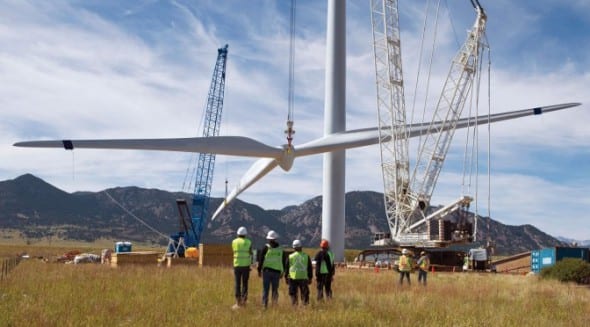The renewable energy industry walked away from the All Energy conference in Melbourne this week feeling a little more positive about the future. The battery storage market appears to be on the verge of something big, and the large scale renewable energy developers hope that the two-year capital strike that brought the sector to a halt might soon be over.

And, for the first time, the industry has the two mainstream political parties competing to impress. Bill Shorten became the first Opposition leader to address a major renewable energy conference, hailing the muzzling of the “far right” attack dogs and promising his party would introduce a 50 per cent renewables target for 2030 if it got into power, although it was a policy short on detail.
Then Greg Hunt became the first Coalition front bencher to talk to a major renewables conference since his then junior off-sider, Simon Birmingham, promised the Clean Energy Week conference in Brisbane in 2013 that the 41,000GWh target would not be changed.
Don’t forget to head to room 213 at 4.45pm for our day 1 closing plenary by Minister for the Environment @GregHuntMP pic.twitter.com/xB2qgD6deU
— All-Energy (@AllEnergyAU) October 7, 2015
We all know how that worked out. The Coalition got into power and promptly appointed a climate denier to head a review of the target. There was a major push from the right wing to kill the target altogether. Only the Senate stopped that, and the industry and the government settled on a 33,000GWh target, neither of them particularly happy about it.
Hunt, now environment minister, admitted this week that the reduction of the former target was largely a result of lobbying by the vested interests in the fossil fuel industry, the coal-fired utilities in particular.
Perhaps a better word would be industrial blackmail, ripping up nearly signed contracts and refusing to negotiate others. “The majors were on a capital strike … they were simply not investing,” Hunt conceded this week.
He pointed to the threat of falling demand and an overhang of renewable energy certificates, but it was pretty clear that the utilities were emboldened by the ideology of the incoming government, and their belief that they could force the government to the table, if the government didn’t beat them there.
As Bernie Fraser, then head of the Climate Change Authority, had foreshadowed when completing his review of the RET, and rejecting the utilities plea to cut the target:
“I feel sure, well I expect, that the Opposition Coalition parties will be swayed by the lobbying to reduce the figure to an updated 20 per cent figure.”
Hunt insists those days are over. The current target, he says, is “rock solid”, and he, the energy minister and the prime minister are right behind it.
“Right now, there is no excuse for people not proceeding,” he told the conference. “You can have absolute confidence that that renewable energy target will not change.”
The problem is that, right now, there are no investments, and no commitments by the utilities. This is despite the fact that the price of renewable energy certificates, known as LGC’s, rose this week to just short of $65. That is equivalent to the penalty price they will pay for not building enough large-scale wind and solar plants, although the lack of tax deductibles on the penalty means that the effective price is $93.
Still, $65 should be enough to get some wind farms, and maybe even some solar farms in Queensland, where the sun is brighter and wholesale power prices higher, financed and built.
Those in the industry say there are signs of movement. There is certainly no shortage of projects – more than 10,000MW of wind projects are said to be “shovel ready”, and new proposals for large-scale solar farms, tipped to account for most of the new build, are being made each week.

But there is no finance. Utilities are talking about signing some power purchase agreements, but only for a relatively short period, around three to five years. That is not enough for the bankers to get over the line, there is still too much uncertainty for 25-30 year assets.
The only projects going ahead are those that have solid contracts with the ACT government, under their auction program. Some states are talking higher targets, but as Hunt pointed out himself, those lack the mechanisms.
“This is the real world. We have said to the majors there is no excuse for not writing PPAs.” Time will tell whether the majors such as AGL – which said only a few weeks ago that there was still not enough policy certainty to invest in large-scale renewables – buy that argument.










